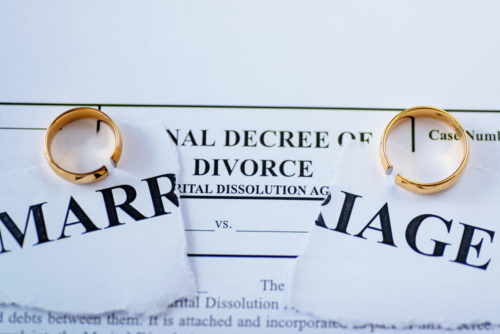
High Net Worth Divorce in Arizona
High Net Worth Divorce in Arizona
When younger couples get divorced in Arizona, the process may be fairly straightforward because they may not have had much time to accumulate very many assets. However, if you have been married for a long time and have built substantial assets during your marriage, you may have to go through a type of dissolution called a high net worth divorce.
This type of divorce can be very complex because of the different types of assets that may be involved. High net worth divorces may involve complex asset classes and holdings worth hundreds of thousands up to millions of dollars. People who go through these types of divorces will likely need to get the help of a competent family law attorney who is experienced in handling high net worth divorce cases.
The Schill Law Group understands complex asset and debt division matters and is prepared to help.
How is a High Net Worth Divorce Different from a Regular Divorce?
A high net worth divorce will frequently involve complex legal and business issues that are not involved in regular divorces. High net worth couples may have vastly more extensive assets, including businesses, real estate holdings, art collections, trusts, stocks and bonds, investment accounts, retirement accounts, jewelry, and more. All of these types of assets may need to be identified, located, and valued to accomplish an appropriate division of property.
Under A.R.S. § 25-211, Arizona is a community property state.[1] This means that all of the assets that you have accumulated during your marriage that are not deemed separate property are considered to be equally owned by both spouses and subject to equal division. In many high net worth divorces, however, there may be antenuptial agreements in place.
High net worth divorces are likelier to include disputes about whether certain assets should be considered to be separate or community property.
How are Trusts Handled in High Net Worth Divorces?
Some wealthy couples have trusts established to hold substantial amounts of their assets. The handling of the assets of a trust can be crucial for the outcome of the property division in a high net worth divorce. When a spouse funds a trust with community property, it can transform the assets in the trust from being considered to be the separate property of that spouse to being considered to be the community property of both spouses to be divided in the divorce.
Normally, a trust that was created by a third party to benefit one spouse but not the other will be considered to be the beneficiary spouse’s separate property. The other spouse might argue that the court should consider the trust when it determines the amounts of spousal and child support that the other spouse should be granted.
When a trust is involved in a divorce, an attorney will need to seek disclosure from the trust. This can be hard because trust accounts may be located outside of the U.S. Trustees for U.S. trusts will normally send disclosures in response to a request. Offshore trusts might have trustees that fail to respond. When that happens, you might have to file a petition with that country’s court to seek an order for the trustee to provide disclosures.
How are Businesses Handled in Divorces?
Many high net worth divorce cases involve private businesses. When a private company is owned by one of the spouses, multiple complex issues will need to be addressed. The business will need to be properly valued. If the company has assets that are spread around the world, the valuation will be more complex. Often, business valuations will require significant investigations and the work of forensic accountants.
After a business valuation is completed, the divorcing couple will then need to determine how to distribute it in the property division portion of their divorce. One spouse may not be willing to give up his or her interest in the company. The spouse that wishes to keep control of the company might need to give a larger portion of the other assets to his or her spouse to retain control of the business.
How is Real Estate Handled in a High Net Worth Divorce?
While a regular divorce might involve dividing the marital home, high net worth divorces may involve real estate holdings beyond the home. Wealthy couples might have rental properties, commercial properties, and vacation homes. An appraisal of each of the various properties that are owned will need to be completed to understand what their fair market values are.
Some of the real estate properties might be the separate property that one spouse brought into the marriage. Other properties might be community property. Finally, some separate real estate might become community property if marital funds were used to make improvements. All of these issues will need to be addressed to ensure a fair division of the property.
Types of Complex Valuations in a Divorce
There are multiple types of complex valuations that might be necessary for a high net worth divorce. Some of the types of valuations that might need to be completed include the following:
- Retirement accounts
- Investment accounts
- Stocks and bonds
- Jewelry
- Art collections
- Intellectual property
- Real estate
- Businesses
- Yachts
- Other valuable assets
Different experts might have to value the assets from within their fields and submit written appraisals. In some cases, each spouse will hire his or her experts to testify about how they arrived at their valuations.
Spousal Maintenance in High Net Worth Divorces
Under A.R.S. § 25-530, spousal maintenance is a type of support that may be ordered by the court in cases in which the divorcing spouses have a large income disparity. Spousal maintenance is in addition to any child support that might be ordered, and it is frequently at issue in high net worth divorces. However, some cases involve prenuptial agreements through which the lower-earning spouse may have waived his or her rights to spousal maintenance.
In those types of cases, the lower-earning spouses might challenge the prenuptial agreements’ validity and claim that he or she signed under duress. A lower-earning spouse might also claim that the wealthy spouse failed to disclose all of his or her assets, meaning that the lower-earning spouse could not understand the rights that he or she was waiving.
Managing tax implications involved with asset division
Many tax implications might be involved in high net worth divorces. Both spouses will need to consider credits and deductions that might be lost after divorcing. Spouses who will have to pay spousal maintenance are not able to deduct the payments on their taxes any longer, and spouses who receive spousal maintenance are required to report the payments as income on their tax returns.
Transferring certain assets in divorces can trigger tax consequences. Some of the illiquid assets that might involve tax issues include the following:
- Brokerage account funds
- 403(b) accounts
- 401(k) accounts
- IRAs
- Stock options
- Annuities
- Thrift savings plans
To prevent tax consequences when transferring some of these illiquid assets, a qualified domestic relations order may need to be prepared. This might help people to avoid penalties and taxes on what is transferred.
Concealment of Assets During a Divorce
Unfortunately, some spouses try to conceal or hide assets to prevent their spouses from getting their rightful share in divorces. They might try to transfer assets to family members or friends, hide them, or spoliate the assets. Others simply do not disclose all of their assets. For example, they might have accounts that are not disclosed and transfer funds from disclosed accounts to make it appear as if they have less. They might also move assets to offshore locations or place community assets in trusts.
Whenever a spouse believes that the other spouse is concealing or hiding assets, he or she will need to get help from an experienced attorney. A lawyer might work with a forensic accountant to find assets that have been spoliated, hidden, or concealed. If it is not possible to determine the extent of the person’s actions, the court can draw an adverse inference against the spouse who has engaged in this type of behavior.
Schill Law Group Experienced High Net Worth Attorneys
If you have accumulated substantial assets during your marriage and want to get divorced, getting help from an experienced high net worth divorce lawyer at The Schill Law Group is important. Our experienced property division and divorce lawyers understand how to handle the complex issues that are frequently involved in these types of divorces.
Contact us today to schedule a consultation by calling us at 480.525.8900.










